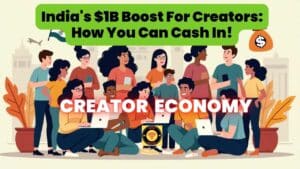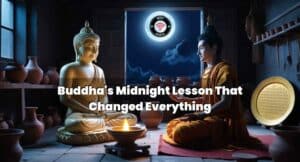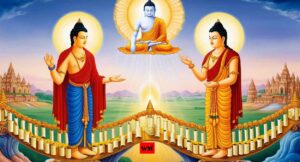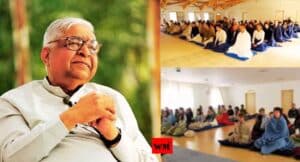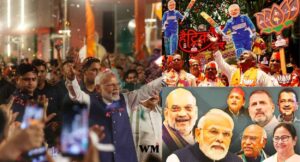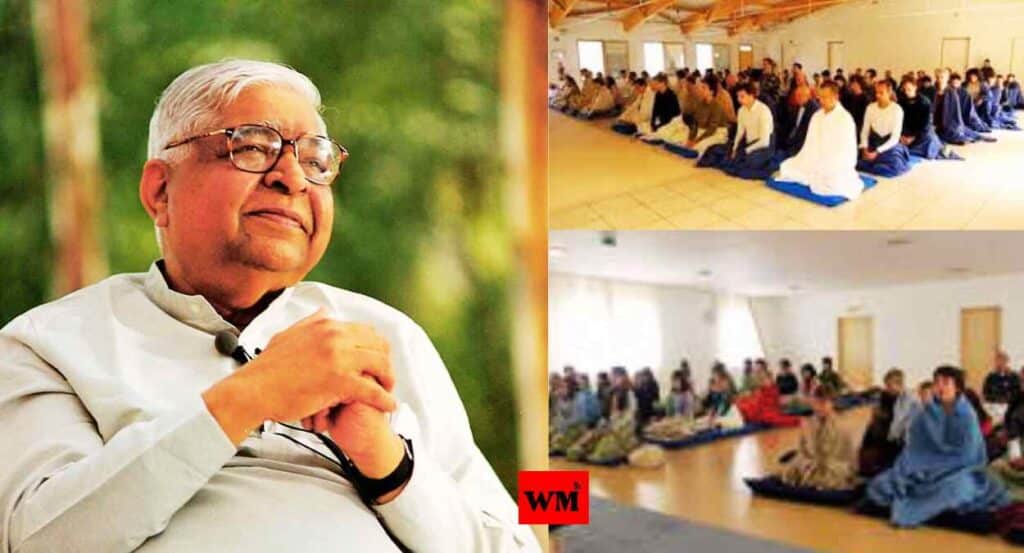
The Transformative journey of S.N. Goenka
In the tapestry of spiritual history, few threads shine as brightly as that of Satya Narayan Goenka, affectionately known as S.N. Goenka or Goenkaji. His transformation from a successful businessman to a revered teacher of Vipassana meditation is a testament to the profound power of Dhamma – the universal law of nature. Let’s embark on a journey through the life of this extraordinary individual who touched countless lives and helped revive an ancient meditation technique.
A Childhood Steeped in Tradition
Born in 1924 in Mandalay, Myanmar (then Burma), young Goenka’s early years were a blend of cultural richness and spiritual curiosity. His grandfather, an Indian immigrant, played a pivotal role in shaping Goenka’s worldview. Despite being Hindu, the elder Goenka instilled in his grandson a deep respect for Myanmar’s Buddhist traditions.
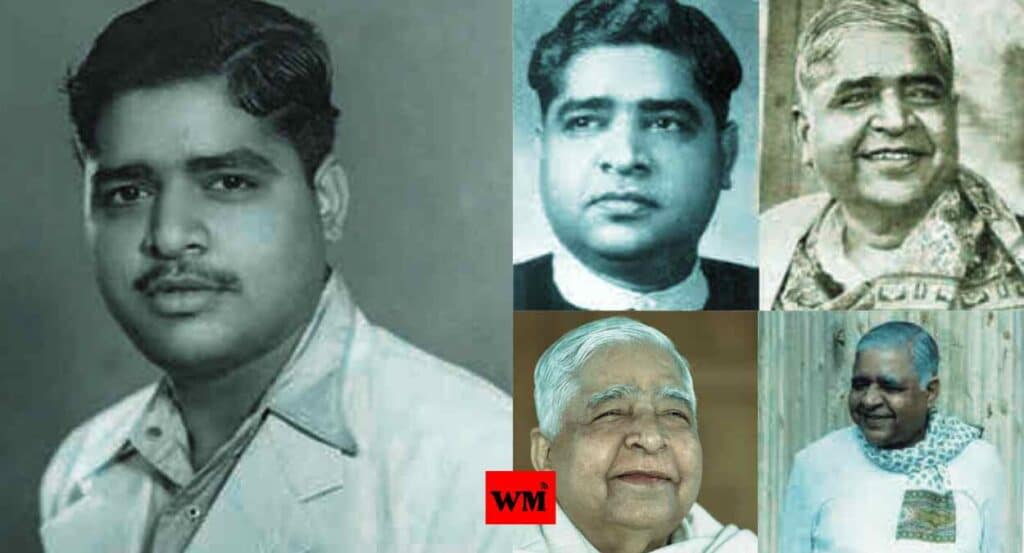
Little Satya often found himself at the famous Maha Myat Muni pagoda, watching his grandfather in silent meditation. These moments, though perhaps not fully understood by the child, planted seeds that would later blossom into a lifelong spiritual quest.
War and Displacement: The First Taste of Impermanence
World War II brought dramatic changes to Goenka’s life. As Japanese forces stormed Myanmar in 1942, the teenage Goenka found himself leading a large group of family members on a perilous journey to safety in India. Trekking through treacherous mountains and dense jungles, Goenka had his first real encounter with the Buddhist concept of impermanence.
This experience, while harrowing, laid the groundwork for his future understanding of life’s ever-changing nature – a cornerstone of Vipassana practice.
The Successful Businessman with a Migraine
After the war, Goenka returned to Myanmar and quickly rose to prominence in the business world. He became a leader in the Indian community and seemed to have it all – wealth, status, and success. But beneath the surface, all was not well.
Debilitating migraines plagued Goenka, resistant to treatments from doctors across the globe. The pain was so severe that he resorted to morphine injections for relief, a solution that brought its own set of problems.
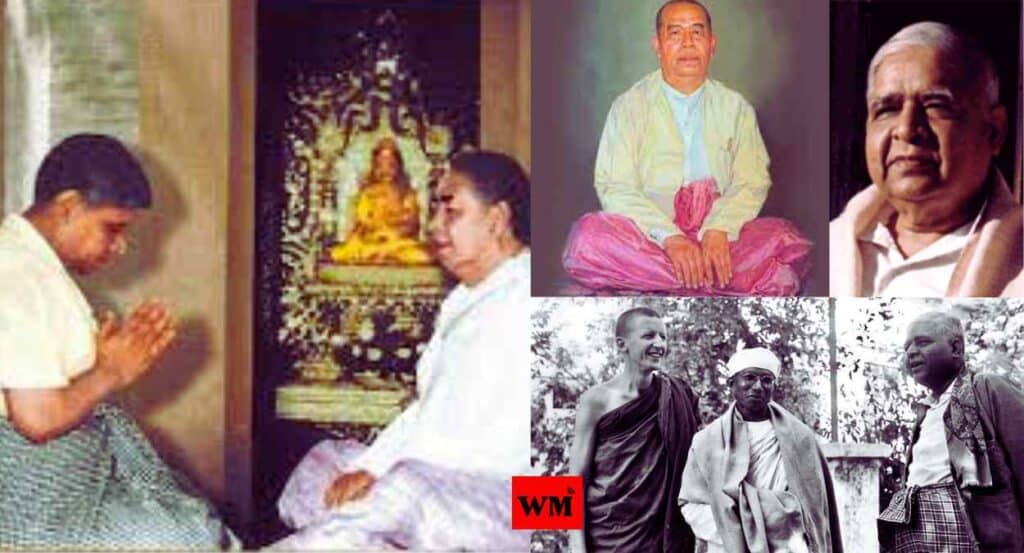
A Fateful Encounter: Meeting Sayagyi U Ba Khin
It was in this state of physical distress that Goenka first encountered Sayagyi U Ba Khin, a respected government official and Vipassana teacher. Initially seeking only physical relief, Goenka was challenged by U Ba Khin to look deeper.
“Come to relieve your mind of tension and suffering; the physical benefits will automatically follow,” U Ba Khin advised. This shift in perspective marked the beginning of Goenka’s transformation.
The First Vipassana Course: A Life-Changing Experience
In 1955, Goenka attended his first 10-day Vipassana course. It wasn’t an easy start – he nearly quit on the second day. But perseverance paid off, and by the end of the course, Goenka had discovered benefits beyond his wildest imagination.
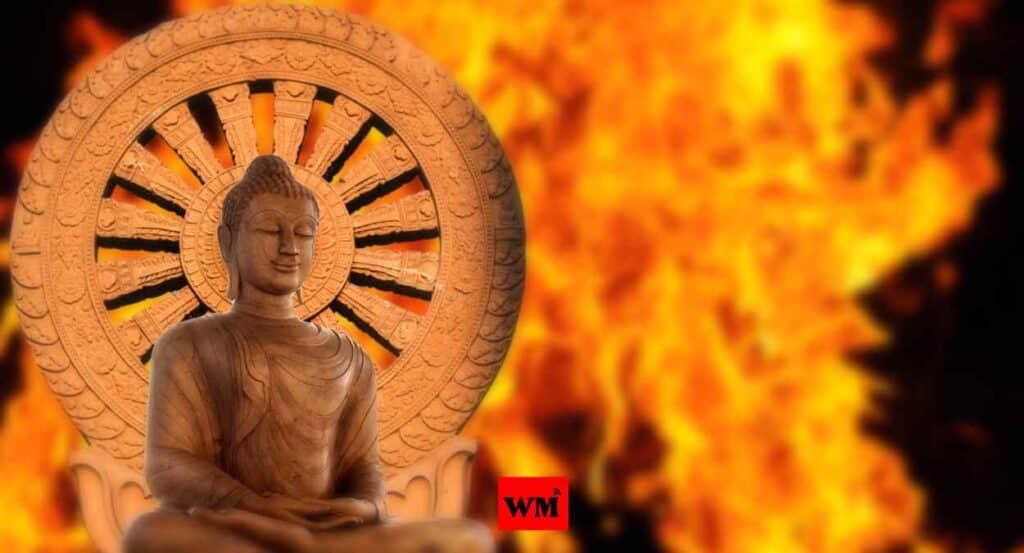
This experience ignited a lifelong dedication to the practice and teaching of Vipassana. Every morning for the rest of his life, Goenka would chant his gratitude to Sayagyi U Ba Khin.
The Golden Years: Immersion in Dhamma
The years that followed were what Goenka later termed his “golden years.” A twist of fate in 1963 saw the newly installed military government in Myanmar nationalizing industries. Overnight, Goenka lost much of his fortune and business interests.
Far from being a setback, this turn of events allowed Goenka to immerse himself fully in Dhamma under U Ba Khin’s guidance. Free from business responsibilities, he spent more and more time at the International Meditation Centre in Yangon.
The Call to Teach: Fulfilling an Ancient Prophecy
In 1969, a pivotal moment arrived. U Ba Khin, recalling an ancient prophecy that Dhamma would return from Myanmar to India after 2,500 years, appointed Goenka as a teacher of Vipassana.
Before Goenka left for India, ostensibly to visit his ailing mother, U Ba Khin told him, “You are not the one going—I am going, the Dhamma is going!” With these words, Goenka embarked on his mission as a Dhamma-duta (emissary of Dhamma).
Spreading Dhamma Across India: The Early Days
Goenka’s arrival in India marked the beginning of a new chapter in the history of Vipassana. Starting with a small course in Mumbai in July 1969, he began crisscrossing the country, teaching in whatever spaces were available – from tents to rented rooms.
His teaching style was unique and captivating. With a rich, melodious voice, Goenka would transform even the most modest settings into timeless spaces of inner exploration. His discourses, delivered with wisdom and often laced with humor, made the ancient teachings accessible to modern minds.

The Birth of Dhamma Giri: A Home for Vipassana
As the demand for courses grew, the need for a permanent center became apparent. In 1973, a chance stop in Igatpuri led to the discovery of what would become Dhamma Giri – the Hill of Dhamma.
The early days at Dhamma Giri were marked by both challenges and inspiring dedication. Despite financial struggles, Goenka and his wife Mataji chose to live in simple accommodations, embodying the spirit of selfless service they sought to instill in others.
Dhamma Giri officially opened in October 1976, becoming the heart of the Vipassana movement in India. Today, it stands as a testament to Goenka’s vision and the power of Dhamma.
From India to the World: Vipassana Goes Global
The prophecy spoke not only of Dhamma’s return to India but also of its spread around the world. In 1979, exactly a decade after his arrival in India, Goenka began teaching courses in the West.
His first international courses were held in France, followed by Canada and the UK. Over the next two decades, Goenka’s travels took him across Europe, North America, Asia, and eventually back to Myanmar in 1990.
The Assistant Teacher Program: Multiplying the Seeds of Dhamma
Recognizing the growing demand for Vipassana courses, Goenka initiated the assistant teacher program in 1981. This innovative approach allowed courses to be conducted using recordings of his teachings, vastly expanding the reach of Vipassana while maintaining the purity of the technique.
Today, hundreds of assistant teachers conduct thousands of courses annually, reaching nearly 150,000 people at over 150 permanent centers worldwide.
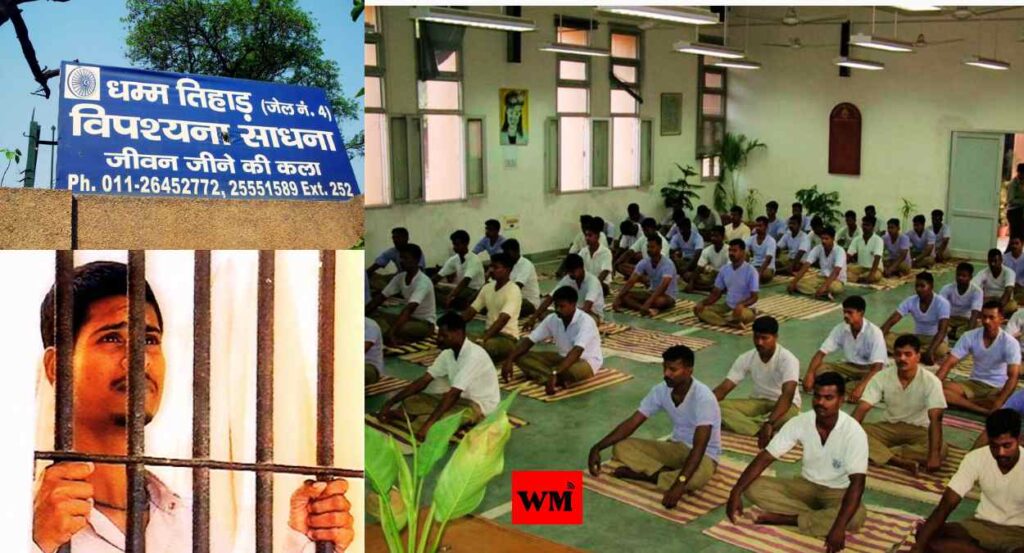
Vipassana in Prisons: Bringing Light to Dark Places
One of Goenka’s most impactful initiatives was the introduction of Vipassana courses in prisons. In April 1994, he personally led a “Course for a Thousand” at Tihar Prison in Delhi.
This program has since expanded to many correctional facilities worldwide, offering inmates a tool for self-transformation and rehabilitation.
The Vipassana Research Institute: Preserving Ancient Wisdom
Goenka founded the Vipassana Research Institute to make the Pali-language Tipitaka – the oldest texts recording the Buddha’s teachings – widely available. The institute has made these texts accessible in various scripts, free of charge, preserving this ancient wisdom for future generations.
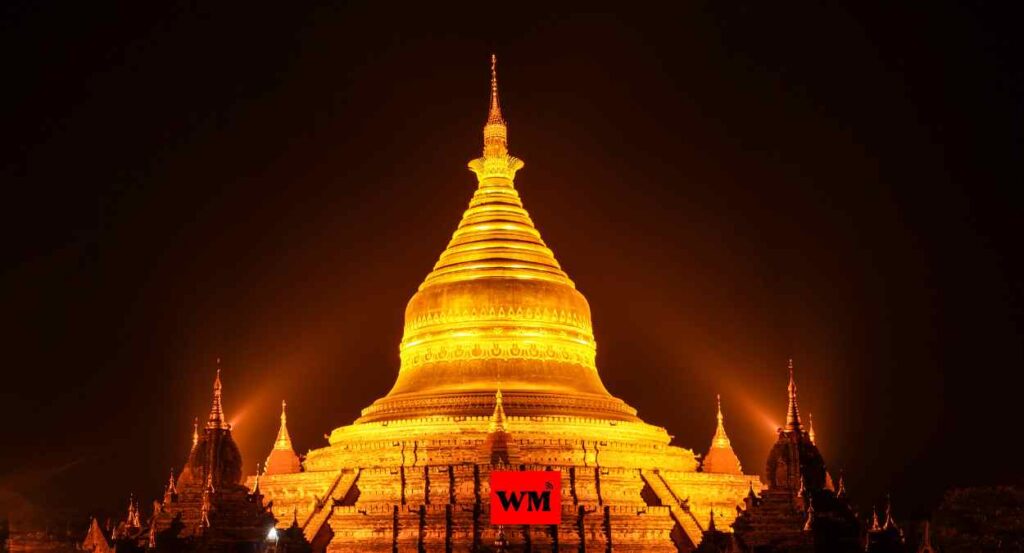
The Global Vipassana Pagoda: A Monument to Dhamma
Perhaps Goenka’s most visible legacy is the Global Vipassana Pagoda near Mumbai. This grand structure, a slightly smaller replica of Myanmar’s Shwedagon Pagoda, serves multiple purposes:
- It’s a monument of gratitude to Myanmar and Sayagyi U Ba Khin
- It attracts people to learn about the Buddha’s teachings
- It stands as a symbol of Dhamma’s return to India
The Essence of Goenka’s Teaching: Experience Over Blind Faith
At the heart of Goenka’s teaching was the emphasis on direct experience. He often said, “This is not a blind faith, but a scientific approach to experience truth.” His instruction was non-sectarian, emphasizing the universal nature of Dhamma.
Goenka’s teaching style was marked by its clarity, humor, and practical approach. He had a gift for making complex philosophical concepts accessible through stories and analogies.
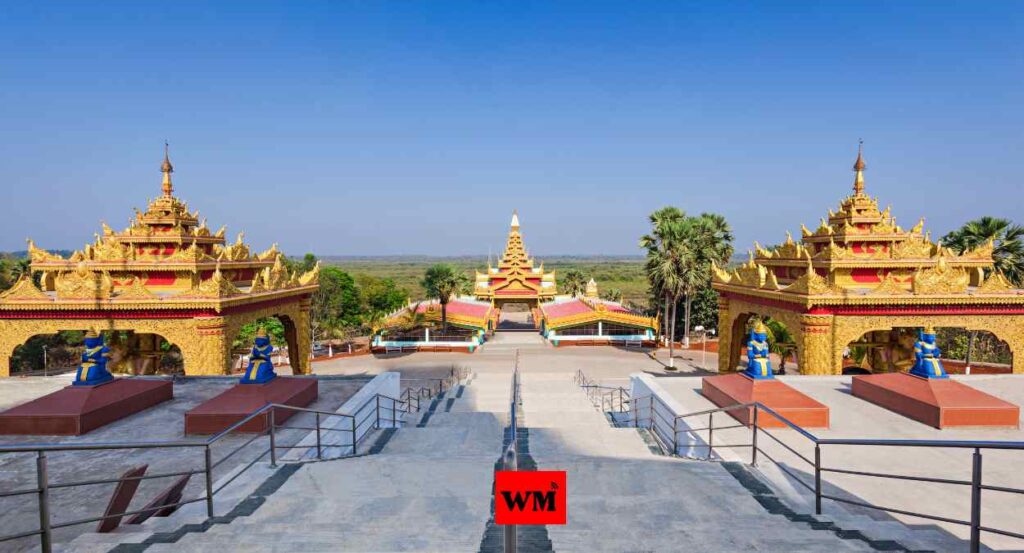
The Bunch of Keys: A Parable of Dhamma Practice
One of Goenka’s most memorable stories, “The Bunch of Keys,” beautifully illustrates the importance of not just preserving but multiplying the seeds of Dhamma:
An old man gives five grains of corn to each of his four daughters-in-law, promising to return in four years. The fourth daughter-in-law plants and multiplies the grains, filling storerooms with the harvest. Similarly, Goenka encourages students to not merely preserve the “five grains of Dhamma” they receive, but to multiply them through diligent practice.
Humility in the Face of Fame: A True Dhamma Server
Despite his growing fame and the numerous awards he received, Goenka remained remarkably humble. He consistently deflected personal praise, insisting that he was merely a vehicle for Dhamma.
When students thanked him, his response was always the same: “I am only an instrument. Thank Dhamma! And also thank yourself for working hard.”
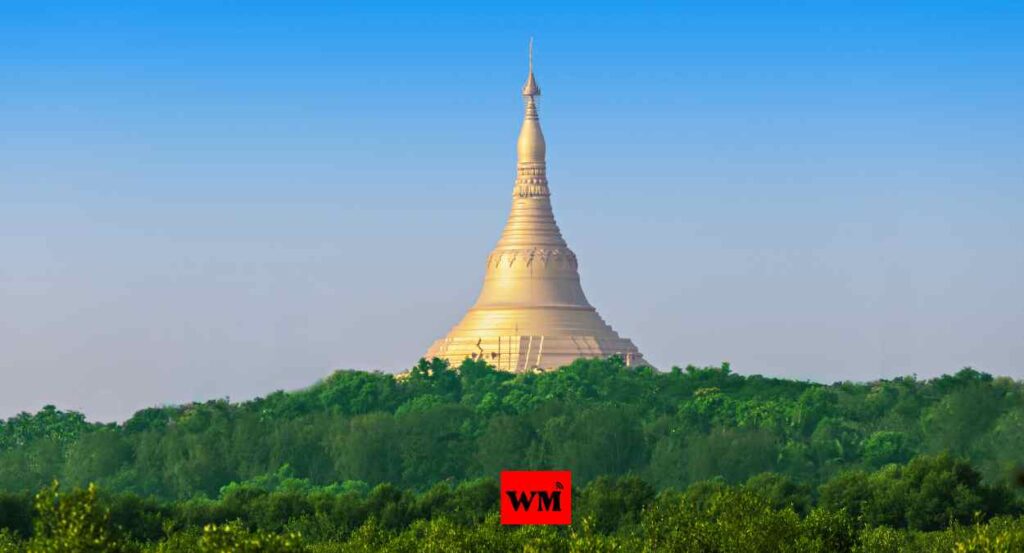
The Final Years: A Lasting Legacy
In his later years, despite failing health, Goenka continued to teach and inspire to the best of his ability. He passed away peacefully on September 29, 2013, at the age of 90, leaving behind a global community of practitioners and a thriving tradition of Vipassana meditation.
The Continuing .
Today, the impact of Goenka’s life work continues to ripple outward:
- Thousands of people learn Vipassana every year at centers worldwide
- The technique is taught in prisons, schools, and corporations
- Research into the benefits of Vipassana is ongoing
- The Global Vipassana Pagoda stands as a beacon, attracting visitors from around the world
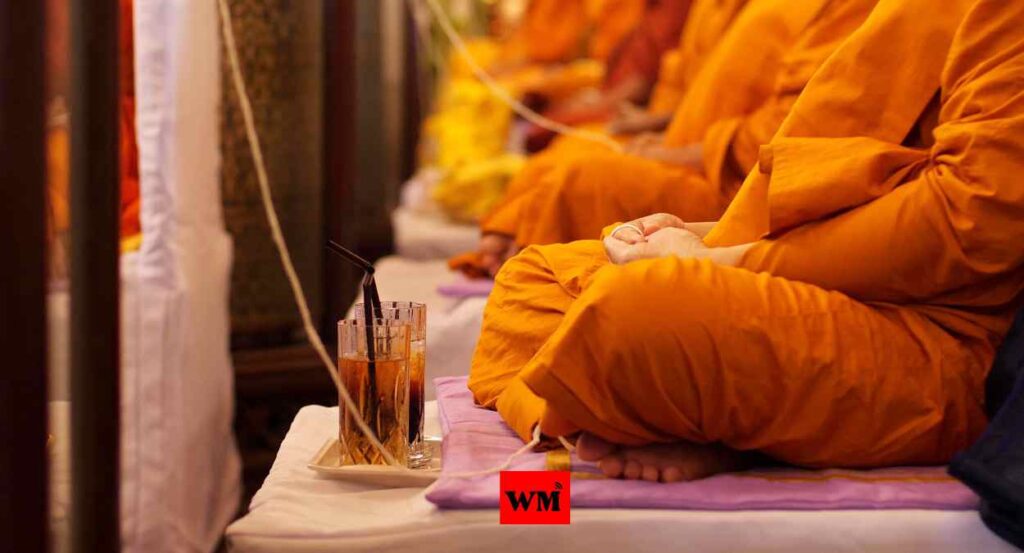
FAQs
Q. What is the basic principle of Vipassana meditation as taught by S.N. Goenka?
A. The basic principle is the observation of sensations throughout the body with equanimity, leading to the understanding of impermanence and the development of wisdom.
Q. How long does a typical Vipassana course last, and why is this duration important?
A. A typical course lasts 10 days. This duration is important because it allows students to delve deep into the practice, breaking old habits and establishing a strong foundation in the technique.
Q. Did S.N. Goenka charge money for teaching Vipassana?
A. No, Goenka never charged for teaching Vipassana. All courses are run on a donation basis, with expenses covered by voluntary contributions from those who have completed a course and wish to share the benefits with others.
Q. How did S.N. Goenka adapt the ancient technique of Vipassana for the modern world?
A. While maintaining the purity of the technique, Goenka presented Vipassana in a non-sectarian, scientific manner, making it accessible to people of all backgrounds without the need for conversion or adoption of specific beliefs.
Q. What is the significance of the Global Vipassana Pagoda in Mumbai?
A. The Global Vipassana Pagoda serves as a monument of gratitude to Myanmar and Sayagyi U Ba Khin, attracts people to learn about the Buddha’s teachings, and symbolizes the return of Dhamma to India.
Q. How has Vipassana meditation, as taught by S.N. Goenka, been implemented in prisons?
A. Vipassana courses have been conducted in prisons worldwide, starting with Tihar Prison in Delhi. These courses offer inmates a tool for self-transformation and have shown promising results in rehabilitation.
Q. What is the role of the assistant teachers in the Vipassana organization established by S.N. Goenka?
A. Assistant teachers, trained and appointed by Goenka, conduct courses using his recorded instructions. This system allows for the widespread teaching of Vipassana while maintaining the purity and consistency of the technique.
Conclusion: A Life Dedicated to Dhamma
S.N. Goenka‘s journey from a successful businessman to a renowned spiritual teacher is a testament to the transformative power of Vipassana meditation. His dedication to spreading Dhamma across the world has touched countless lives, offering a path to inner peace and liberation.
Goenka’s legacy lives on through the global network of Vipassana centers, the countless individuals who have benefited from the practice, and the continued spread of this ancient technique in its pure, non-sectarian form.
As we reflect on his life and teachings, we’re reminded of his often-repeated words: “Be happy, be peaceful, be liberated.” In a world often fraught with turmoil and suffering, Goenka’s message of peace through self-purification remains as relevant and powerful as ever. His life serves as an inspiration for all those seeking a path to true happiness and inner freedom through the practice of Vipassana meditation.
Disclaimer:
This article is for informational purposes only. While we strive for accuracy, Wini Media does not guarantee the completeness or reliability of any information presented. For official details about S.N. Goenka or Vipassana meditation, please refer to dhamma.org.
Also Read :
The Truth About the Global Vipassana Pagoda’s Mesmerizing Relics
The Complete Guide to Transformational Vipassana Meditation
The Unexpected Fat Burning Power Of Ghee, How To Take Ghee For Weight Loss?
Google And NPCI Join Hands To Propel India’s UPI Worldwide : UPI Global Launch
NASA Sends Out Warning : Aircraft-Sized Asteroid Hurtles Towards Earth At Frightening Speeds.
What Does The Odometer Of An Automobile Measure? Your Car’s Odometer Reading Explained
Emotional First Glimpse: Devotees Captivated By Ram Lalla Idol Of Ayodhya Ram Mandir









